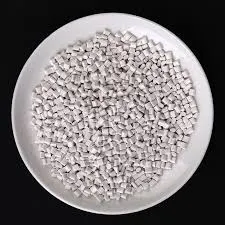The Versatile Applications of Anionic Polyacrylamide
Anionic polyacrylamide (APAM) is a water-soluble polymer widely used in various industries due to its unique properties and functionalities. This synthetic polymer primarily consists of acrylamide units. When anionic groups are introduced into its structure, the resulting anionic polyacrylamide exhibits functionalities that make it valuable for a range of applications, particularly in water treatment, soil stabilization, and various industrial processes.
One of the most prominent uses of anionic polyacrylamide is in water treatment. As a flocculant, APAM facilitates the aggregation of fine particles suspended in water, making them easier to separate during filtration or sedimentation. This property is particularly beneficial in municipal water treatment facilities, where the removal of suspended solids, organic matter, and other contaminants is critical for producing clean drinking water. Additionally, APAM is used in the treatment of industrial wastewater, where it aids in the clarification process and helps in achieving compliance with environmental regulations.
The Versatile Applications of Anionic Polyacrylamide
Another notable application of anionic polyacrylamide is in the oil and gas industry. The polymer is utilized in enhanced oil recovery processes, where it improves the efficiency of oil extraction from reservoirs. Due to its rheological properties, APAM can alter the viscosity of the injection fluids, facilitating better displacement of oil during the recovery process. This results in increased yield and reduces the environmental impact associated with traditional oil extraction methods.
anionic polyacrylamide uses

In the mining and mineral processing industries, anionic polyacrylamide plays a crucial role in the separation and concentration of minerals. The polymer enhances the settling rates of particulate matter during processes such as flotation and sedimentation. This leads to higher recovery rates and improves the overall efficiency of mineral extraction operations. Furthermore, the use of APAM in tailings management helps minimize environmental risks associated with mining activities by facilitating the safe disposal of waste materials.
The construction industry also benefits from anionic polyacrylamide in various applications. As a soil stabilizer, it is used in road construction and civil engineering projects to enhance the stability and load-bearing capacity of soil. APAM-treated soil exhibits improved mechanical properties, reducing the likelihood of erosion and structural failure in construction projects. Additionally, the polymer can be employed in the formulation of concrete and mortar, where it acts as a water-retaining agent, enhancing workability and reducing cracking.
Beyond these applications, anionic polyacrylamide is also utilized in the cosmetics industry, where it serves as a thickening agent and stabilizer in various formulations. Its ability to retain moisture and improve the texture of products makes it a popular choice in skincare and cosmetic formulations.
The safety profile of anionic polyacrylamide is another aspect that contributes to its widespread use. While acrylamide, the monomer used to produce APAM, is considered to be toxic in its free form, the polymer itself is generally regarded as safe for a variety of applications. The polymerization process significantly reduces the potential health risks associated with acrylamide exposure.
In conclusion, anionic polyacrylamide is a multifunctional polymer with an extensive range of applications across various industries, including water treatment, agriculture, oil recovery, mining, construction, and cosmetics. Its unique properties, such as water solubility, flocculation, and soil stabilization, make it an invaluable resource for improving efficiency and effectiveness in numerous processes. As industries continue to seek sustainable solutions and innovations, the versatile applications of anionic polyacrylamide are likely to expand even further, underscoring its significance in modern technology and environmental management.

